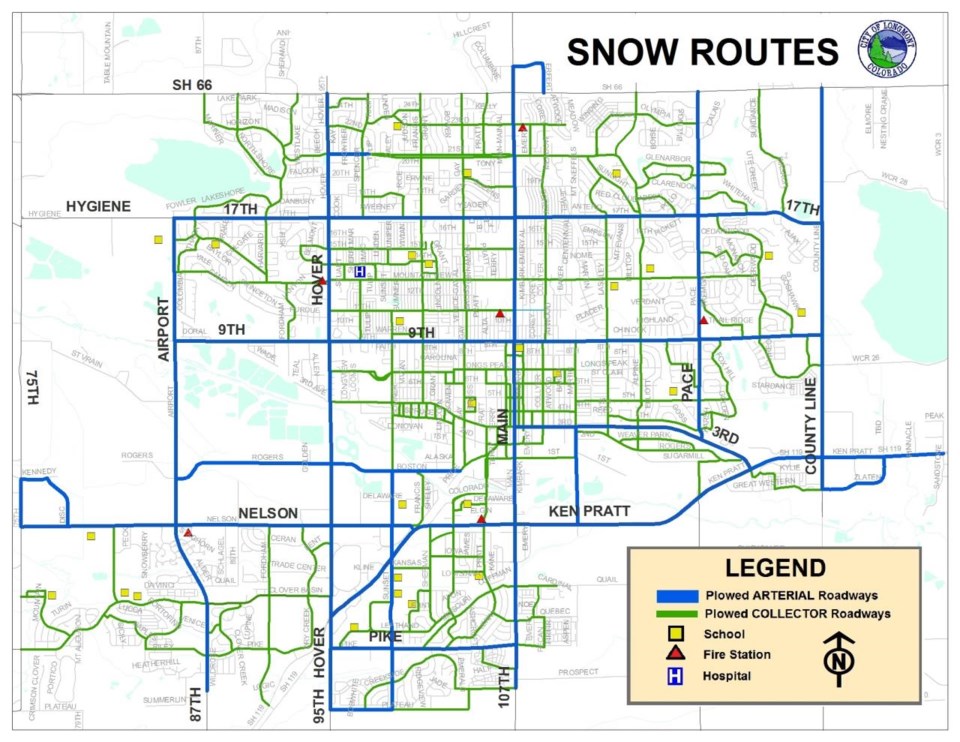Longmont won’t be plowing all its roads anytime soon, mainly because of how expensive and impractical it is.
According to the city, Longmont maintains 340 miles of centerline roadways. Slightly less than half, or 140 miles, are plowed regularly.
Snow and ice control — along with many other road and transportation services — is funded through the street fund sales and use tax, equal to three-quarters of a cent per $1 purchase. That street fund, which includes the tax and other intergovernmental sources, was budgeted for $34.9 million in expenditures for 2022, with just over $1 million to be spent on snow and ice operations.
To plow everything, namely residential roads, would be at least double the cost, the city said.
“The city’s regular snow and ice control program does not include plans for plowing residential streets,” the city’s website reads. “With proper vehicle preparation, most residents can travel on residential roads after snow storms and access plowed snow routes with only minor inconvenience”
The city’s street fund also pays for street improvements, traffic signals, maintenance, capital improvement projects and just about anything else related to roads, so paying for more plowing would mean cutting from those other areas.
Additionally, Longmont staff said residential roads are not generally designed for snow removal due to the high number of intersections, curves and turns. The many driveways and on-street parking spots also means snow might block residential uses more than when roads aren’t plowed, according to the city.
“Many residents would end up with an even greater snow removal burden on sidewalks and driveways,” the city said.
In rare conditions, Longmont will plow residential roads after an extreme snow storm. That typically creates rows of snow that range from four to six feet high, according to the city government.
“We consider deploying this program to be an emergency measure only used under specific criteria because it employs such expensive and extensive resources,” the city said. “Because of these reasons, the residential plows do not deploy every time snow falls.”
The roads Longmont does plow aim to provide the best access to emergency services and safe flow of commuter traffic with emphasis on bus routes and schools. Arterial roadways, meaning the streets that provide access to town or transportation networks outside of town, are prioritized, along with collector streets that provide neighborhood access.
Designated snow routes also work to meet certain criteria for safety and drivability, including avoiding left turns and U-turns, available areas to pile snow as needed and no surrounding obstacles or safety hazards.
Longmont encourages drivers to be prepared for snow storms by ensuring vehicles have decent tires, good wiper blades, a working defroster and ice scraper. When there is a storm, the public is encouraged to plan trips wisely and minimize travel.
For people who do have to travel, the city recommends using designated snow routes and reducing speed in snow and ice conditions. Longmont also provides views of real time street cameras to monitor conditions.



